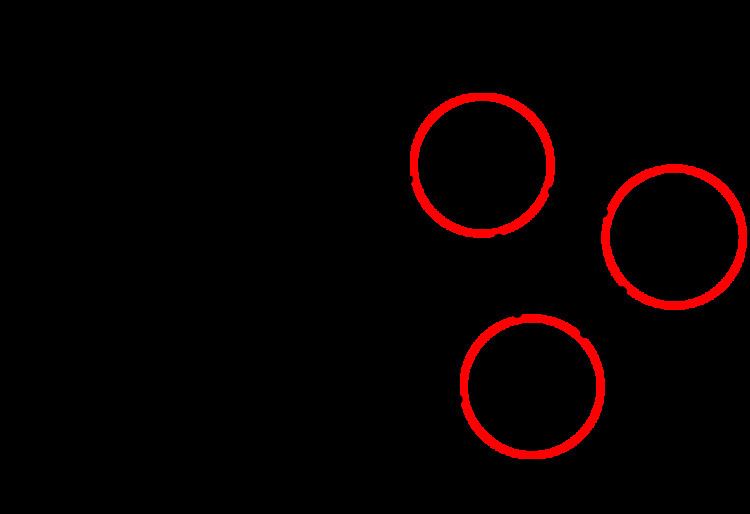 | ||
In graph theory, a peripheral cycle (or peripheral circuit) in an undirected graph is, intuitively, a cycle that does not separate any part of the graph from any other part. Peripheral cycles (or, as they were initially called, peripheral polygons, because Tutte called cycles "polygons") were first studied by Tutte (1963), and play important roles in the characterization of planar graphs and in generating the cycle spaces of nonplanar graphs.
Contents
Definitions
A peripheral cycle
The equivalence of these definitions is not hard to see: a connected subgraph of
Properties
Peripheral cycles appear in the theory of polyhedral graphs, that is, 3-vertex-connected planar graphs. For every planar graph
In planar graphs, the cycle space is generated by the faces, but in non-planar graphs peripheral cycles play a similar role: for every 3-vertex-connected finite graph, the cycle space is generated by the peripheral cycles. The result can also be extended to locally-finite but infinite graphs. In particular, it follows that 3-connected graphs are guaranteed to contain peripheral cycles. There exist 2-connected graphs that do not contain peripheral cycles (an example is the complete bipartite graph
Peripheral cycles in 3-connected graphs can be computed in linear time and have been used for designing planarity tests. They were also extended to the more general notion of non-separating ear decompositions. In some algorithms for testing planarity of graphs, it is useful to find a cycle that is not peripheral, in order to partition the problem into smaller subproblems. In a biconnected graph of circuit rank less than three (such as a cycle graph or theta graph) every cycle is peripheral, but every biconnected graph with circuit rank three or more has a non-peripheral cycle, which may be found in linear time.
Generalizing chordal graphs, Seymour & Weaver (1984) define a strangulated graph to be a graph in which every peripheral cycle is a triangle. They characterize these graphs as being the clique-sums of chordal graphs and maximal planar graphs.
Related concepts
Peripheral cycles have also been called non-separating cycles, but this term is ambiguous, as it has also been used for two related but distinct concepts: simple cycles the removal of which would disconnect the remaining graph, and cycles of a topologically embedded graph such that cutting along the cycle would not disconnect the surface on which the graph is embedded.
In matroids, a non-separating circuit is a circuit of the matroid (that is, a minimal dependent set) such that deleting the circuit leaves a smaller matroid that is connected (that is, that cannot be written as a direct sum of matroids). These are analogous to peripheral cycles, but not the same even in graphic matroids (the matroids whose circuits are the simple cycles of a graph). For example, in the complete bipartite graph
